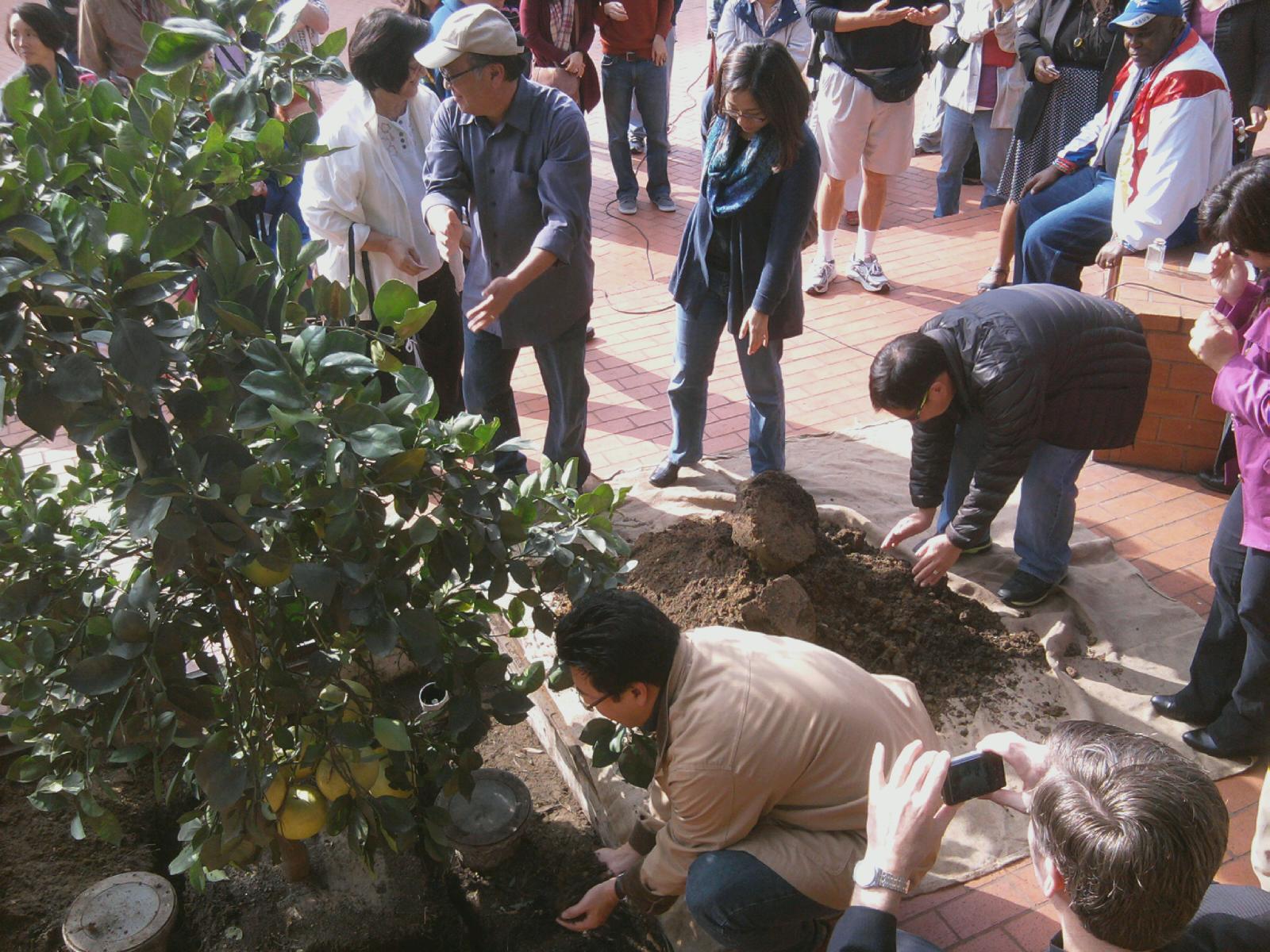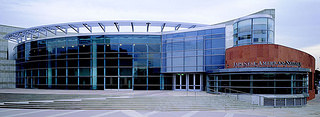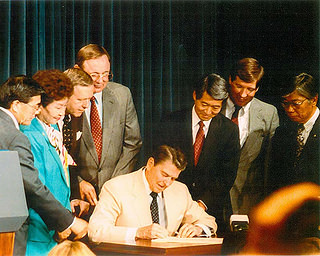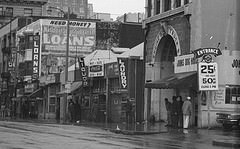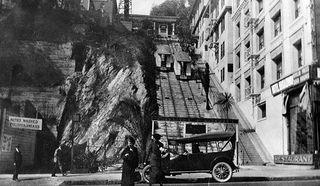Grapefruit Planting Ceremony on Azusa and San Pedro Streets
On December 8, 2012 at the corner of Azusa and San Pedro, several community groups came together to plant a grapefruit tree to replace one that had been lost. Japanese Americans, Skid Row community activist, Native Americans, Azusa Street Revival members and Pentecostals came together to celebrate this new tree together, inviting everyone to participate by adding a scoop of soil to the newly planted tree.
In 2004, the last remaining tree from when the site was a fruit orchard was accidently killed with hot cooking oil. It was a 125-year-old grapefruit tree, which still ...
Japanese American National Museum Opens
Located on N. Central Ave. and E. 1st Street, the Japanese American National Museum opened in 1992 with the mission to promote understanding and appreciation of America’s ethnic and cultural diversity by sharing the Japanese American experience.
Built by Japanese immigrants in 1925, the Japanese American National Museum’s renovated historic building was the first structure designed specifically in Los Angeles to house a Buddhist place of worship, the Nishi Hongwanji Buddhist Temple. It is located less than a mile from Azusa Street, walking west along 1st Street.
...
The Civil Liberties Act of 1988
In the 1980s, the third-generation youth joined the Nisei in seeking redress for the injustices suffered by the internees during the war. The lengthy struggle ended in the passage of the Civil Liberties Act, additionally known as the Redress Law. The Civil Liberties Act of 1988 granted reparations to Japanese Americans who had been interned by the United States government during World War II. The act granted each surviving internee about $20,000 in compensation, with payments beginning in 1990. The legislation stated that government actions were based on "race prejudice, ...
Japanese American Cultural and Community Center is Established
Located in Little Tokyo, the historic heart of the Japanese American community, the JACCC was the dream of visionary Issei and Nisei (first and second-generation) Japanese American pioneers to create a permanent center for the community where arts and culture come alive and can flourish for future generations.
The JACCC has its roots in the early 1970's redevelopment of Little Tokyo, when a citizens advisory committee determined that one of its first priorities was to build a cultural and community center. With the support of the Community Redevelopment Agency (CRA) of ...
Redevelopment Plan of 1975 and Skid Row
As development began and industrial markets grew — particularly the flower and fashion districts adjacent to Skid Row — the need to “improve” Skid Row arose. Various groups consistently initiated efforts to improve the community.
In 1975, a Redevelopment Plan was adopted, which included a “Policy of Containment.” This policy concentrated social service agencies and people experiencing homelessness in one section of the city, where many of them naturally congregated. The goal of the policy was to stabilize and centralize the area to make services ...
LA in the 1970s
In the 1970s, the population in Los Angeles was 2,816,061. The image on the left shows downtown Los Angeles and Dodgers Stadium, taken in 1970s. US Census Bureau charted steady growth in Los Angeles from the 1930s to the 1970s, with 350,000-400,000 new residents every ten years.
Closing of Angel’s Flight
Angel's Flight railway was credited as "the world's shortest railway" and was 2 street blocks long. It was located less than two miles northwest of Azusa Street and assisted residents traveling up the steep 33% incline of Bunker Hill. The railway closed on Bunker Hill to make way for the massive redevelopment project in the Bunker Hill region of Downtown. It was designated as Los Angeles Historic-Cultural Monument in 1962 before it was dismantled.
Department of Water and Power Building is completed
Located less than one mile north of Azusa Street, one of the most iconic buildings in downtown Los Angeles was built and completed in 1965. Designed by A.C. Martin architects, the Department of Water and Power Building, also known as the John Ferraro Building, has left it's mark on the visual aesthetic of downtown.
The East Los Angeles Interchange
Considered on of the largest interchange of freeways in the world, this interchange connects the Golden Gate Freeway, Santa Ana, Santa Monica Freeway, San Bernadino and Pomona freeways and is located about one mile northeast of Azusa Street.
Eviction of Chavez Ravine Residents
The fight to preserve affordable housing and prevent displacement is a historic one in Los Angeles, as it is across the nation. One of the most famous stories is that of the residents of the communities of Palo Verde, La Loma, and Bishop that made up Chavez Ravine, which is located 2.5 miles north of Azusa Street.
This tight-knit Mexican-American community near downtown was promised new and modern low-cost housing would be built on their land. The Housing Authority then issued eviction notices to the Chavez Ravine residents, promising the families that they would have ...


